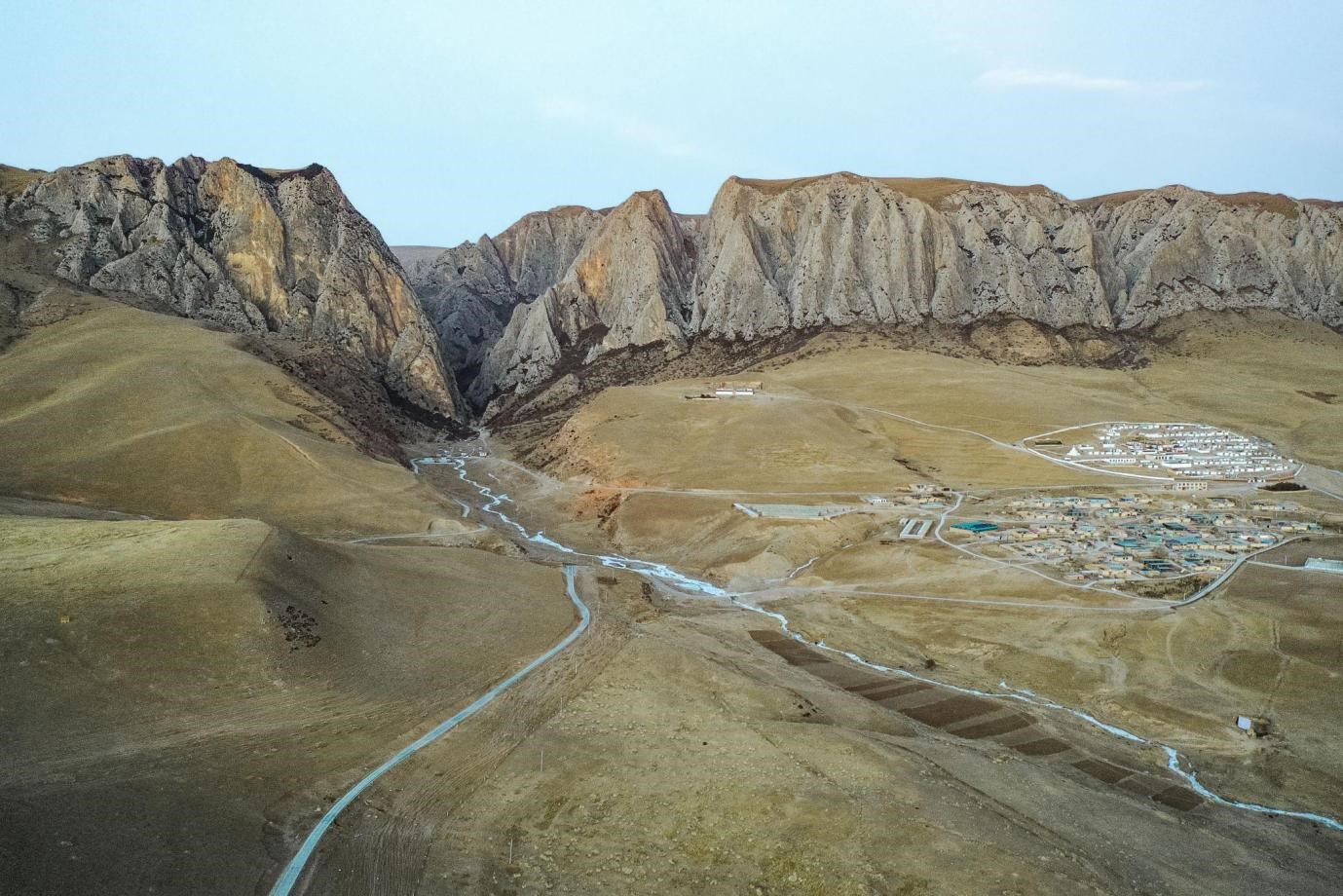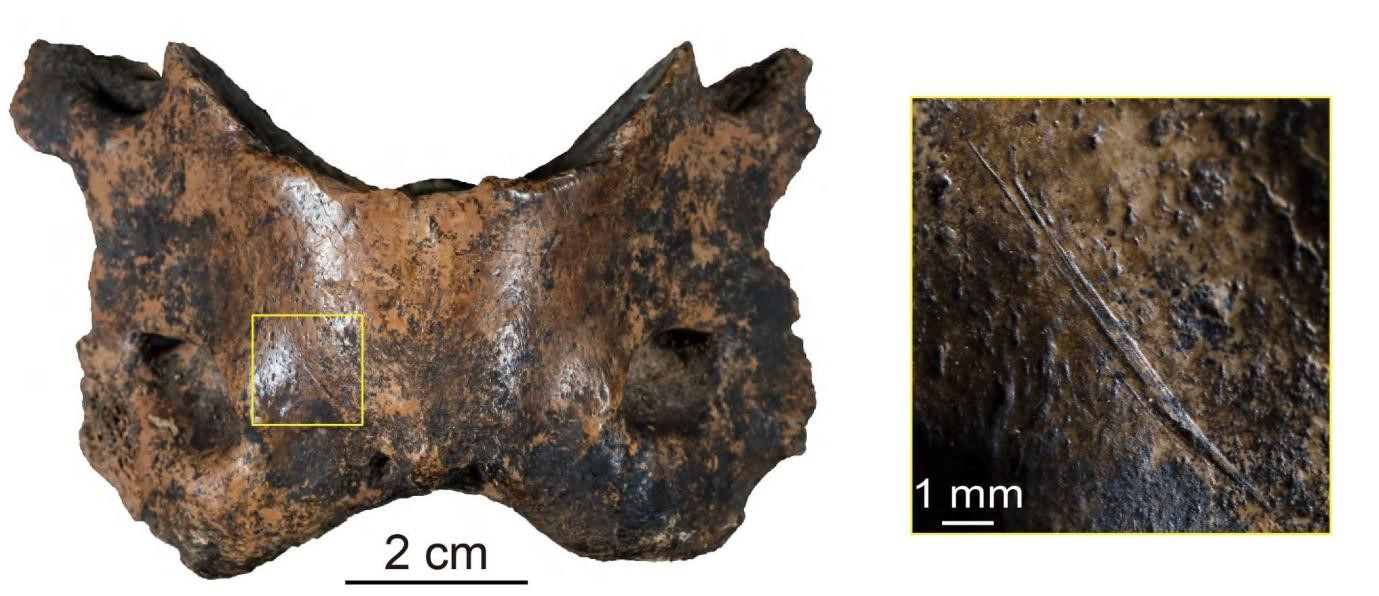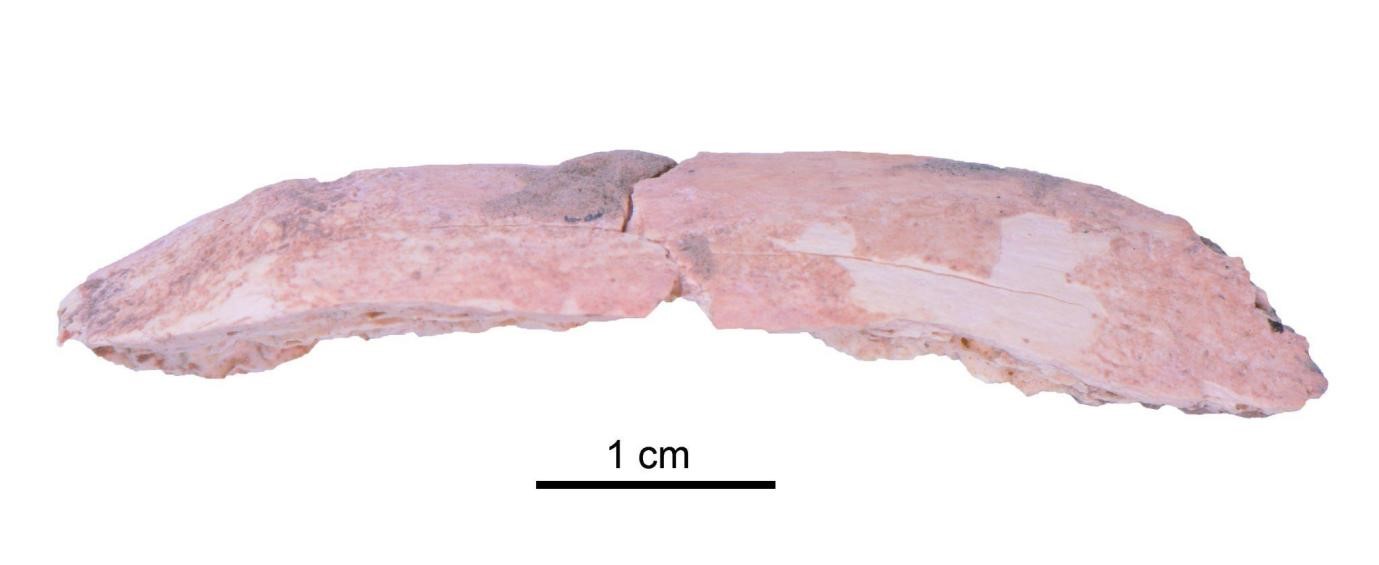Denisovans survived on the Tibetan Plateau as late as 48-32 ka BP, by butchering and consuming a diverse range of animals, a Nature study reveals. The research led by Dongju Zhang from Lanzhou University (China), Frido Welker from the University of Copenhagen (Denmark), and Fahu Chen from the Institute of Tibetan Plateau Research, CAS (China) sheds light on Denisovan behaviour and indicates how adaptable they were to the harsh and variable environment of the Tibetan Plateau.
The Denisovans are an extinct species of ancient human, closely related to Neanderthals, who ranged across much of eastern Eurasia towards the end of the last ice age. The researchers studied more than 2,500 bones from the Baishiya Karst Cave on the high-altitude Tibetan Plateau, one of only two places where Denisovans are known to have lived.

View of the Ganjia Basin where Baishiya Karst Cave is located. Credit: Dongju Zhang’s group (Lanzhou University).
Proteomics for zooarchaeology
Most bone fragments excavated from Baishiya Karst Cave are so fragmented that it is impossible to morphologically identify which species they are. The team therefore employed a proteomic screening method, named Zooarchaeology by Mass Spectrometry (ZooMS). Based on small differences in the amino acid sequence of the protein collagen, ZooMS was able to help the researchers determine the species of most bone specimens. “ZooMS allows us to extract valuable information from often overlooked bone fragments, providing deeper insight into human activities.” Dr. Huan Xia said (Lanzhou University).
Fauna community composition
By combining molecular and traditional zooarchaeological analysis, they determined that most of the bones were from blue sheep (also known as the bharal), which is a species of caprine common to the Himalayas today. Other bone fragments came from large herbivores, such as the wild yak, equids and the extinct woolly rhino, and carnivores, such as the locally extinct spotted hyena. The researchers also identified bone fragments from small mammals, such as marmots, and birds. Together, the animal species found in Baishiya Karst Cave indicate that the area around the cave was dominated by a grass landscape with some small forested areas. “Large amounts of bone remains were found in the cave. The diverse species identified partly answers the questions why Denisovans chose to live in Baishiya Karst Cave and the surrounding Ganjia Basin, and how they survived there for hundreds of thousands of years.” Prof. Dongju Zhang said.
Denisovan activities
Many of the identified bone fragments had cut-marks and other traces of human activities, indicating that they had been processed by Denisovans in the past. Detailed analysis of the human activities visible on the bone surfaces show both the removal of meat and extraction of bone marrow, but also indicate the preparation of animal hides, and even the use of bone as tool-making materials. There are also human activities visible on the bones of the small mammals and birds. “Current evidence suggests that it was Denisovans, not any other human groups, who occupied the cave and made efficient use of all the animal resources available to them throughout their occupation.” Dr. Jian Wang said (Lanzhou University).

Many of the bones recovered from Baishiya Karst Cave, like this spotted hyena atlas, contain traces of human activities such as cut marks. Credit: Dongju Zhang’s Group (Lanzhou University).
A new Denisovan fossil
In addition, through the ZooMS analysis the researchers found a hominin rib bone. Detailed shotgun proteomic analysis of all the proteins preserved in this bone revealed it to be a Denisovan fossil. “Since we only know the Denisovans from a few fossils worldwide, they are still a bit of a mystery. Every new individual we discover therefore provides a significant piece to the puzzle of who they were, where they were living, and when!” Dr. Zandra Fagern?s says (University of Copenhagen). The layer where the rib was found was dated to between 48,000 and 32,000 years ago, implying that this Denisovan individual lived at a time when modern humans were dispersing across the Eurasian continent.

Xiahe 2, a Denisovan rib fragment identified through palaeoproteomic methods from Baishiya Karst Cave. Credit: Dongju Zhang’s group (Lanzhou University).
Collectively, the results suggest that Denisovans lived at Baishiya Karst Cave well into the Late Pleistocene. "The long occupation of Denisovans at Baishiya Karst Cave, from the late Middle Pleistocene to the late Late Pleistocene, provides a good base for them to adapt to the high elevation environment characteristic of the Tibetan Plateau”, Prof. Fahu Chen says. "Denisovans were there during two cold ice ages, but also during a warmer interglacial period in between. Together, the fossil and molecular evidence therefore indicates that Ganjia Basin, where Baishiya Karst Cave is located, provided a relatively stable environment for Denisovans, despite its high-altitude", adds Dr. Frido Welker, "The question now arises when and why these Denisovans on the Tibetan Plateau went extinct".
Full article:
Xia et al., "Middle and Late Pleistocene Denisovan subsistence at Baishiya Karst Cave", Nature. https://www.nature.com/articles/s41586-024-07612-9


